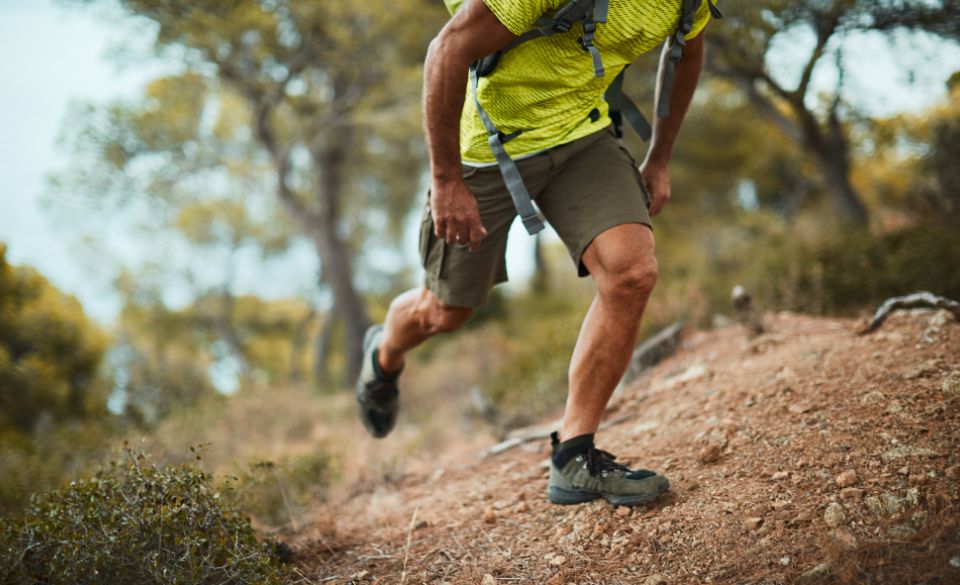
Running With a Backpack: Tips and Tricks for Success
Page Contents
Running is a great way to stay in shape, but sometimes it can be challenging to fit in a run during a busy day. One way to make the most of your time is to run with a backpack. Running with a backpack can add resistance, increase endurance, and help you carry necessary items. However, it can also be uncomfortable and challenging if not done correctly. It can also affect your running form, and increase the chances of injury. Here are some tips and tricks for success when running with a backpack.
Can Running With a Backpack Cause Running Injuries?
Running with a backpack can be a great way to add resistance and make the most of your workout, but it can also potentially lead to running injuries. While the risk of injury depends on several factors such as the weight of the backpack, the duration of the run, and the individual’s fitness level, there are some common injuries associated with running with a backpack.
One of the most common injuries is back pain. Running with a backpack can place extra stress on the back muscles and spine, leading to discomfort and pain. The risk of back pain increases if the backpack is too heavy or if it’s not adjusted correctly to distribute the weight evenly.
Another common injury is shoulder pain. The weight of the backpack can cause strain on the shoulders, leading to pain and discomfort. If the backpack’s straps are not adjusted correctly, it can cause the shoulders to roll forward, leading to bad posture and further shoulder pain.
Running with a backpack can also increase the risk of foot and ankle injuries. The extra weight can affect the runner’s gait and cause overpronation or underpronation, leading to injuries such as plantar fasciitis, Achilles tendonitis, or shin splints.
However, running with a backpack doesn’t always lead to injuries. Proper technique, the right backpack, and good fitness levels can reduce the risk of injury. It’s essential to choose a backpack with adjustable straps and a waist belt to distribute the weight evenly across the body. Pack light, adjust your running form, and start slow to give your body time to adapt to the added weight.
How do I stop my backpack from bouncing when I run?
Backpack bouncing can be a frustrating problem when running, but luckily, there are several ways to prevent it. Here are some tips on how to stop your backpack from bouncing when you run.
Adjust the Straps: The first thing you should check is the straps of your backpack. Make sure they are tightened correctly to fit your body. The backpack should sit snugly against your back, with no gaps or space between it and your body. The straps should also be adjusted so that the weight of the backpack is evenly distributed.
Use a Chest Strap: Some backpacks come with a chest strap that can help keep the backpack in place. If your backpack has one, make sure it’s fastened tightly across your chest. This will help prevent the backpack from bouncing up and down as you run.
Pack Light: Carrying too much weight in your backpack can cause it to bounce around. Pack only what you need for your run, and try to keep the weight as light as possible. This will not only help prevent backpack bouncing but will also make your run more comfortable.
Use Compression Straps: Compression straps are another way to keep your backpack in place. These straps can be found on the sides of the backpack and can be tightened to compress the contents of the backpack. This will help reduce movement and prevent the backpack from bouncing around.
Consider a Running Backpack: If you run with a backpack frequently, it may be worth investing in a running-specific backpack. These backpacks are designed to fit snugly against the body and have features such as a waist belt or a hydration system that can help prevent bouncing.
Running With A Backpack – Tips & Tricks
Running with a backpack can be a great way to enhance your workout, but it can also pose some challenges. Here are some tips and tricks to make running with a backpack more comfortable and enjoyable:
Choose the Right Backpack: A running backpack should fit snugly against your back, with no gaps or space between it and your body. The weight of the backpack should also be evenly distributed, with a waist belt or chest strap to keep it in place.
Pack Light: Carrying too much weight in your backpack can make your run uncomfortable and lead to bouncing. Pack only what you need for your run and try to keep the weight as light as possible.
Adjust the Straps: Make sure the straps of your backpack are adjusted correctly to fit your body. The backpack should sit high on your back, with the weight evenly distributed across your shoulders and waist.
Hydration: Running with a backpack can be a great opportunity to carry water or a sports drink to stay hydrated. Look for a backpack with a hydration system or bring a water bottle that fits securely in the backpack.
Start Slow: If you’re new to running with a backpack, start slow to give your body time to adjust to the added weight. Gradually increase the distance and weight as your body adapts.
Practice Good Form: Running with a backpack can affect your running form. Make sure to keep your shoulders back and down, your core engaged, and your steps light and quick to minimize the impact on your body.
Take Breaks: Running with a backpack can put extra stress on your body. Take breaks when needed, especially if you feel any discomfort or pain.
How Does Running With a Backpack Affect Running Technique
Running with a backpack can impact your running technique in various ways. It can change your posture, stride length, and arm swing, leading to altered running biomechanics. Let’s look at some studies that have investigated how running with a backpack affects running technique.
A study published in the Journal of Strength and Conditioning Research found that running with a backpack increased the forward lean of the trunk and decreased the stride length. This altered running technique was due to the increased weight and the backpack’s position on the back, leading to a change in body alignment.
Another study published in the International Journal of Industrial Ergonomics found that running with a backpack increased the load on the shoulders and upper back, leading to changes in arm swing. Runners compensated for the increased load by swinging their arms less, which affected the overall running gait.
A more recent study published in the Journal of Human Kinetics found that running with a backpack caused an increase in step width and reduced ankle joint range of motion. This suggests that running with a backpack may lead to a more stable gait but could also decrease running efficiency.
While these studies suggest that running with a backpack can affect running technique, it’s essential to note that the degree of impact may vary depending on factors such as backpack weight, position, and runner’s fitness level. Additionally, some of these changes in running technique may be compensated for by the body to maintain overall running performance.
Final Words
Running with a backpack can be a great way to enhance your workout and make the most of your run. However, it can also pose some challenges if you don’t choose the right backpack or pack too much weight. By following some tips and tricks such as adjusting the straps, packing light, hydrating, starting slow, practicing good form, and taking breaks, you can enjoy a comfortable and effective run with your backpack. Remember to listen to your body and adjust as needed to make the most of your workout and prevent any potential injuries.



